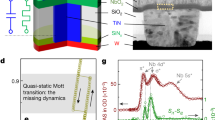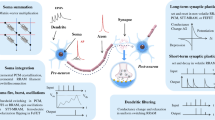Abstract
Carbon nanotubes are often seen as the only alternative technology to silicon transistors. While they are the most likely short-term alternative, other longer-term alternatives should be studied as well, even if their properties are less familiar to chip designers. While contemplating biological neurons as an alternative component may seem preposterous at first sight, significant recent progress in CMOS-neuron interface suggests this direction may not be unrealistic; moreover, biological neurons are known to self-assemble into very large networks capable of complex information processing tasks, something that has yet to be achieved with other emerging technologies.
The first step to designing computing systems on top of biological neurons is to build an abstract model of self-assembled biological neural networks, much like computer architects manipulate abstract models of transistors and circuits. In this article, we propose a first model of the structure of biological neural networks. We provide empirical evidence that this model matches the biological neural networks found in living organisms, and exhibits the small-world graph structure properties commonly found in many large and self-organized systems, including biological neural networks. More importantly, we extract the simple local rules and characteristics governing the growth of such networks, enabling the development of potentially large but realistic biological neural networks, as would be needed for complex information processing/computing tasks. Based on this model, future work will be targeted to understanding the evolution and learning properties of such networks, and how they can be used to build computing systems.
Preview
Unable to display preview. Download preview PDF.
Similar content being viewed by others
References
Albertson, D.G., Thomson, J.N.: The pharynx of caenorhabditis elegans. Phil. Trans. R. Soc. London B 275, 229–325 (1976)
Amaral, L.A.N., Scala, A., Barthélémy, M., Stanley, H.E.: Classes of small-world networks. Proc. Natl. Acad. Sci. USA 10, 11149–11152 (2000)
Barabasi, A.L., Albert, R.: Emergence of scaling in random networks. Science 286, 509–512 (1999)
Barabasi, A.L., Oltvai, Z.N.: Network biology: understanding the cell’s functional organization. Nature Rev. Genetics 5, 101–113 (2004)
Ferrer Cancho, R., Janssen, C., Solé, R.V.: The topology of technology graphs: Small world patterns in electronic circuits. Phys. Rev. E. 64, 32767 (2001)
Cherniak, C.: Component placement optimization in the brain. J. Neurosci. 14, 2418–2427 (1994)
Cherniak, C.: Neural component placement. Trends Neurosc. 18, 522–527 (1995)
Chklovskii, D.B., Schikorski, T., Stevens, C.F.: Wiring optimization in cortical circuits. Neuron 34, 341–347 (2002)
Clark, J.W., Eggebrecht, A.T.: The small world of the nobel nematode caenorhabditis elegans. In: da Providencia, J., Malik, F.B. (eds.) Condensed Matter Theories, vol. 18, Nova Science Publishers, Hauppauge (to appear)
Douglas, R., Martin, K.: Neocortex. In: Shepherd, G.M. (ed.) The synaptic organization of the brain, pp. 459–509. Oxford University Press, Oxford (1998)
Eguiluz, V.M., Chialvo, D.R., Cecchi, G., Baliki, M., Apkarian, A.V.: Scale-free brain functional networks. Phys. Rev. Lett. 94, 18102 (2005)
Fromherz, P.: Neuroelectronic interfacing: Semiconductor chips with ion channels, nerve cells, and brain. In: Waser, R. (ed.) Nanoelectronics and informaiton technology, pp. 781–810. Wiley–VCH, Berlin (2003)
Goldstein, S.C., Budiu, M.: NanoFabrics: Spatial computing using molecular electronics. In: Proceedings of the 28th International Symposium on Computer Architecture 2001 (2001)
Haykin, S.: Neural Networks, 2nd edn. Prentice Hall Intl, London (1999)
Ferrer i Cancho, R., Solé, R.V.: Optimization in complex networks. In: Statistical physics of complex networks, Lecture notes in physics, pp. 114–125. Springer, Berlin (2003)
Infineon. Neurochip with integrated electronics in research phase (2003), http://www.infineon.com/cgi/ecrm.dll/jsp/showfrontend.do?lang=EN&channel_oid=-11398
Jeong, H., Tombor, B., Albert, R., Oltvai, Z.N., Barabasi, A.L.: The large-scale organization of metabolic networks. Nature 407, 651–654 (2000)
Kaiser, M., Hilgetag, C.C.: Spatial growth of real-world networks. Phys. Rev. E 69, 036103 (2004)
Kimura, M., Saito, K., Ueda, N.: Modeling of growing networks with directional attachment and communities. Neural Networks 17, 975–988 (2004)
Mathias, N., Gopal, V.: Small worlds: how and why. Phys. Rev. E 63, 021117 (2001)
Morita, S., Oshio, K.-I., Osana, Y., Funabashi, Y., Oka, K., Kawamura, K.: Geometrical structure of the neuronal network of caenorhabditis elegans. Physica A 298, 553–561 (2001)
Newman, M.E.J.: The structure of scientific collaboration networks. Proc. Natl. Acad. Sci. USA 98, 404–409 (2001)
Oshio, K., Iwasaki, Y., Morita, S., Osana, Y., Gomi, S., Akiyama, E., Omata, K., Oka, K., Kawamura, K.: Database of synaptic connectivity of c. elegans for computation. Technical Report 3, CCeP, Keio Future, Keio University, Japan (2003), The connectivity database is available online at http://ims.dse.ibaraki.ac.jp/research/database_en.html
Rakic, P.: Immigration denied. Nature 427, 685–686 (2004)
Sporns, O.: Graph theory methods for the analysis of neural connectivity patterns. In: Kötter, R. (ed.) Neuroscience Databases: A Practical Guide, pp. 171–186. Klüwer, Boston (2002)
Sporns, O., Chialvo, D.R., Kaiser, M., Hilgetag, C.C.: Organisation, development and function of complex brain networks. Trends Cog. Sci. 8, 418–425 (2004)
Valverde, S., Cancho, R.F., Solé, R.V.: Scale-free networks from optimal design. Europhys. Lett. 60, 512–517 (2002)
Watts, D.J., Strogatz, S.H.: Collective dynamics of ’small-world’ networks. Nature 393, 440–442 (1998)
White, J.G., Southgate, E., Thomson, J.N., Brenner, S.: The structure of the nervous system of the nematode caenorhabditis elegans. Phil. Trans. R. Soc. London B 314, 1–340 (1986)
Zeck, G., Fromherz, P.: Noninvasive neuroelectronic interfacing with synaptically connected snail neurons immobilized on a semiconductor chip. Proc. Natl. Acad. Sci. USA 98(18), 10457–10462 (2001)
Author information
Authors and Affiliations
Editor information
Editors and Affiliations
Rights and permissions
Copyright information
© 2005 Springer-Verlag Berlin Heidelberg
About this paper
Cite this paper
Berry, H., Temam, O. (2005). Characterizing Self-developing Biological Neural Networks: A First Step Towards Their Application to Computing Systems. In: Cabestany, J., Prieto, A., Sandoval, F. (eds) Computational Intelligence and Bioinspired Systems. IWANN 2005. Lecture Notes in Computer Science, vol 3512. Springer, Berlin, Heidelberg. https://doi.org/10.1007/11494669_38
Download citation
DOI: https://doi.org/10.1007/11494669_38
Publisher Name: Springer, Berlin, Heidelberg
Print ISBN: 978-3-540-26208-4
Online ISBN: 978-3-540-32106-4
eBook Packages: Computer ScienceComputer Science (R0)




